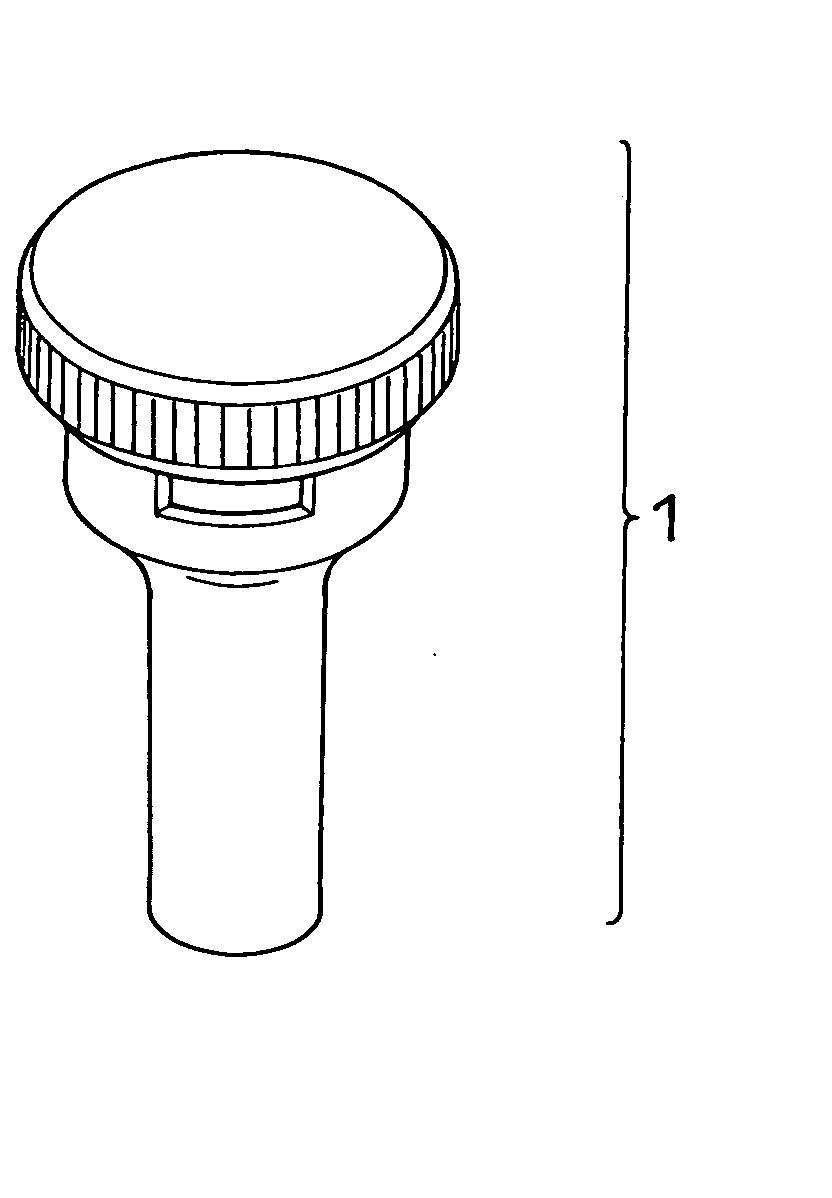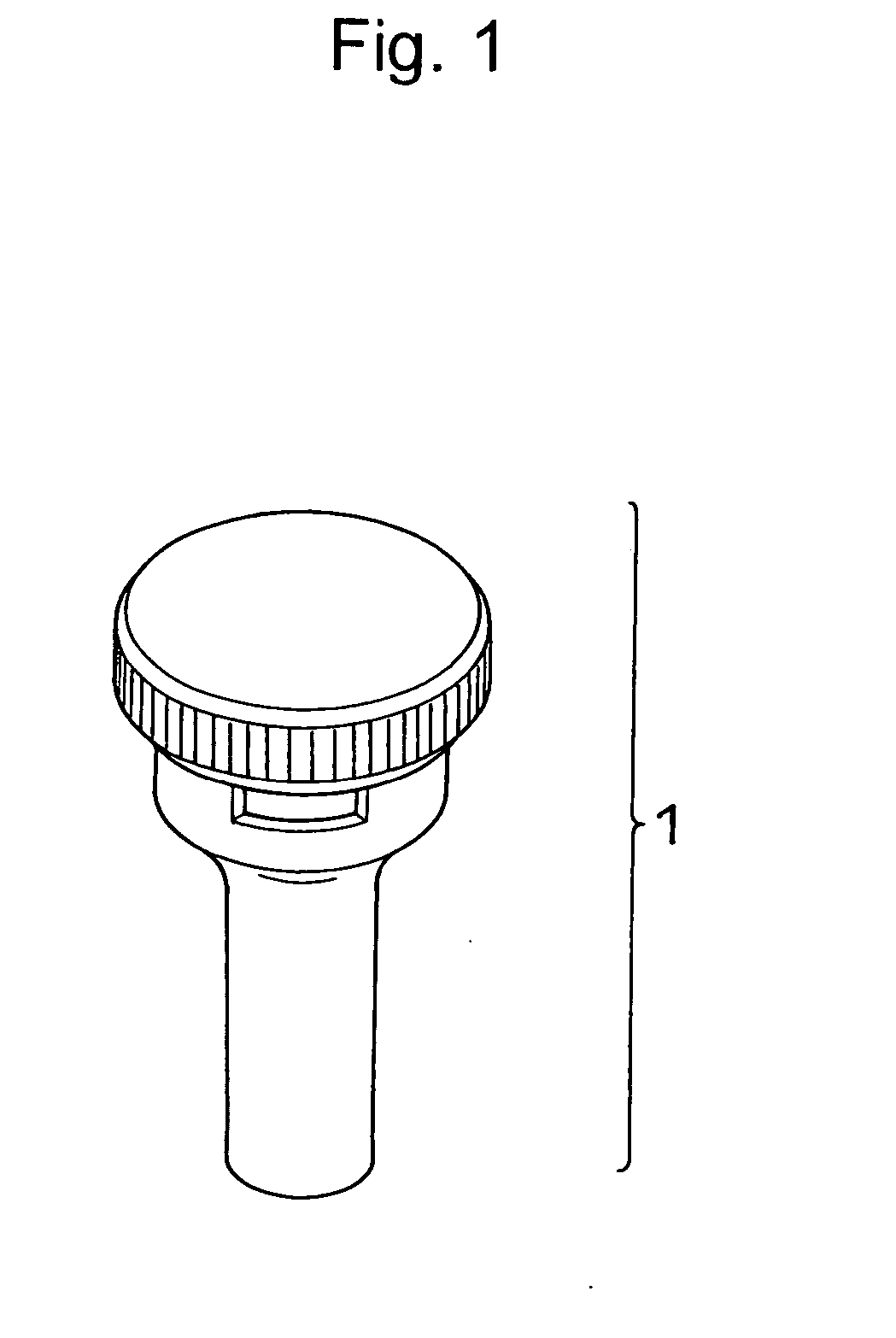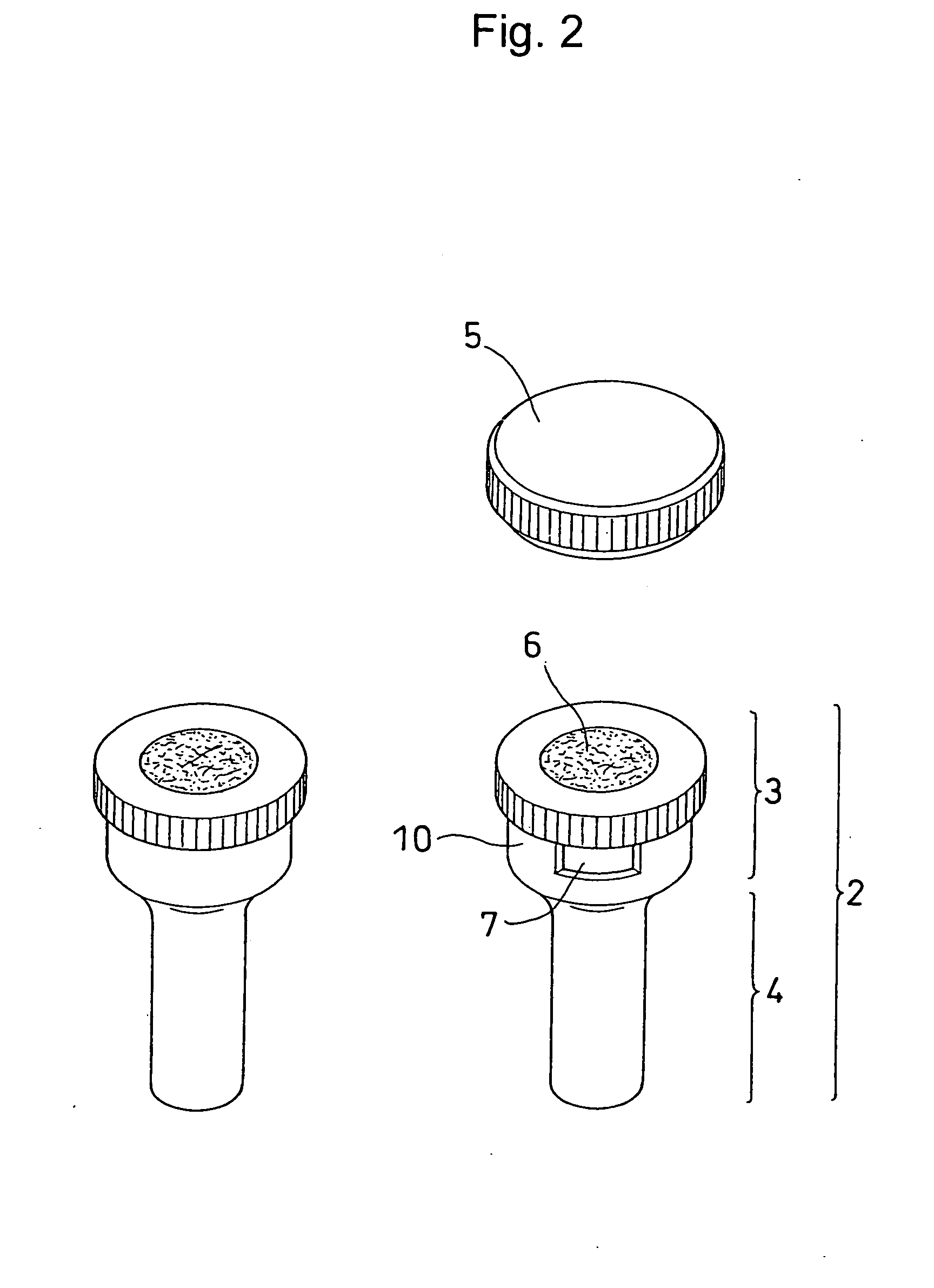Tool for Recovering Biological Samples and Method for Recovering Biological Samples
a biological sample and tool technology, applied in the field of biological sample recovery tools and biological sample recovery methods, can solve the problems of accelerating the impregnation of absorption medium with the recovered biological samples, and achieve the effect of simple and more accurate clinical testing
- Summary
- Abstract
- Description
- Claims
- Application Information
AI Technical Summary
Benefits of technology
Problems solved by technology
Method used
Image
Examples
example 1
Selection of Blood-Absorbing Material (Medium)
1. Method
[0074] In order to select an optimal blood-absorbing material, 10 types of media (Table 1) used for various applications were inspected in terms of absorptivity and the quantity of residual blood. The media were each cut into pieces with diameters of 12 mm each, and the pieces were mounted in experimental tubes. Blood recovered with the aid of heparin was applied dropwise in amounts of 400 μl each, the time required for absorption was inspected, and the conditions of the blood remaining after the centrifugation (at room temperature and 2,500 rpm for 5 minutes) were visually inspected. Blood samples recovered from 2 healthy volunteers, i.e., blood sample A and blood sample B, were used in this procedure.
TABLE 1Materials inspectedMediumComposition*(i)BPolyester(ii)DRayon(iii)EAcrylic / polyolefin(iv)FRayon / polyolefin(v)GPolyolefin(vi)HPolyester / polyolefin / rayon(vii)IPolyester / nylon(viii)JRayon / acrylic binder(ix)KPolyester / polyo...
example 2
Influences of Anticoagulant
[0076] The two types of media selected in Example 1 (i.e., media K and L) were impregnated with a given amount of an anticoagulant, such as heparin-Na, to inspect changes in absorption quantity and residual quantity.
1. Method
[0077] Media K and L were each impregnated with a solution containing 0.1 mg / ml of heparin-Na (adjusted with purified water) (0.01 to 0.1 mg / ml in the case of a general blood sampling tube), dehydrated at room temperature overnight, and then cut into pieces each having a diameter of 12 mm. The blood samples (400 μl) recovered with the use of blood sampling tubes were applied dropwise to the media, allowed to stand at room temperature at 0 minute, 10 minutes, and 20 minutes after initiation, and then centrifuged at room temperature and 2,500 rpm for 5 minutes, in order to inspect the influences of haemolysis. The weights of the components onto which the media had been mounted were measured in advance, and the weights were also measu...
example 3
Type and Concentration of Anticoagulant and Time Before Centrifugation
1. Method
[0079] In addition to the materials K and L selected in Example 2 (a nonwoven material of polyester and polyolefin and melamine foam resin, respectively), material K′ (a material composed of the same material as medium K but with a texture coarser than that of medium K) was immersed in solutions each containing 0.1 mg / ml and 1.0 mg / ml of heparin-Na (adjusted with purified water) and solutions each containing 1.0 mg / ml and 10.0 mg / ml of EDTA-2Na (adjusted with purified water), dehydrated at room temperature overnight, cut into pieces each with diameters of 12 mm, and mounted in experimental tubes (2 pieces in each tube). The blood (800 μl) sampled with the use of a plain blood sampling tube was applied dropwise thereto, not allowed to stand or allowed to stand at room temperature for 30 minutes, and then centrifuged at room temperature and 2,500 rpm for 5 minutes. The weights of the components onto whic...
PUM
| Property | Measurement | Unit |
|---|---|---|
| Diameter | aaaaa | aaaaa |
| Diameter | aaaaa | aaaaa |
| Mass | aaaaa | aaaaa |
Abstract
Description
Claims
Application Information
 Login to View More
Login to View More - R&D
- Intellectual Property
- Life Sciences
- Materials
- Tech Scout
- Unparalleled Data Quality
- Higher Quality Content
- 60% Fewer Hallucinations
Browse by: Latest US Patents, China's latest patents, Technical Efficacy Thesaurus, Application Domain, Technology Topic, Popular Technical Reports.
© 2025 PatSnap. All rights reserved.Legal|Privacy policy|Modern Slavery Act Transparency Statement|Sitemap|About US| Contact US: help@patsnap.com



